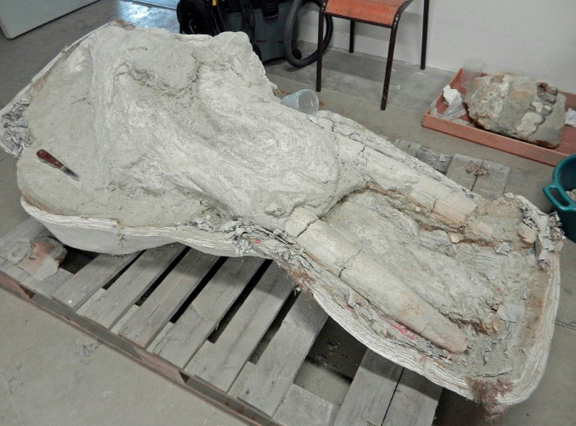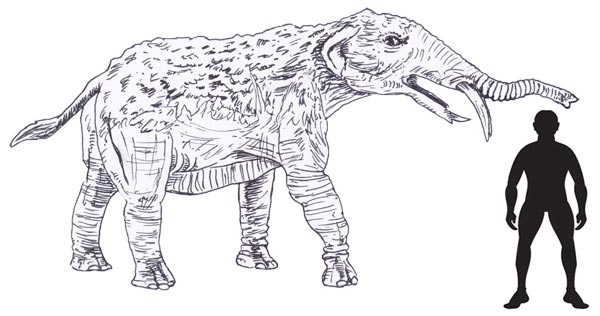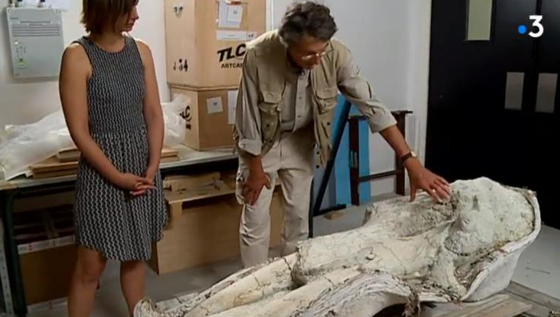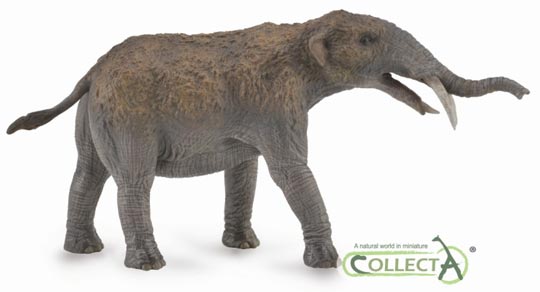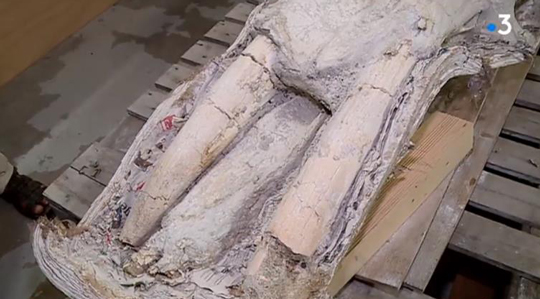Rare Gomphotherium Skull from France
Local Farmer Gives Up His Gomphotherium Skull Secret
Sacré bleu! A French farmer working on his land using a large excavator uncovered the fossilised remains of a prehistoric elephant. However, rather than notify the authorities, it was decided to keep quiet about the fossil find, complete with tusks and large molars, some of which measured more than ten centimetres in length.
Fossils of a Prehistoric Elephant
The discovery was made in the summer of 2014 by an inhabitant of the village of L’Isle-en-Dodon, about forty-five miles south-west of Toulouse in southern France. However, the accidental unearthing of a large elephant skull, must have weighed heavy on the person’s conscience, as three years later, scientists from the Musee d’Histoire Naturelle de Toulouse (Natural History Museum of Toulouse), were informed and a field team was despatched to excavate the site and to remove the prehistoric elephant skull so that this important discovery could be properly prepared and studied.
The Gomphotherium Skull at the Natural History Museum of Toulouse
Picture credit: Musee d’Histoire Naturelle de Toulouse
Gomphotherium – A Rare Fossil Skull
Gomphotheres (Gomphotheriidae), were a large and very diverse group of prehistoric elephants that had a wide temporal and geographical distribution. Fossils of these elephants, only distantly related to today’s elephants, have been found in Asia, Africa, North and Central America as well as Europe and a number of species have been named and described.
The first scientific descriptions of these members of the Order Proboscidea was made by the French naturalist Georges Cuvier in the early part of the nineteenth century. Ironically, much of Cuvier’s research was based on elephant fossils discovered in south-western France, the same part of France, where this fossil skull was uncovered.
Cuvier recognised that the fossils (mostly molars), represented elephants and he erected the species name Mastodon angustidens. It was the German zoologist Karl Hermann Konrad Burmeister, who revised Cuvier’s work, distinguishing these elephants from the mastodonts and erected their own taxonomic family – the gomphotheres.
A Scale Drawing of a Typical Gomphothere (G. angustidens)
Picture credit: Everything Dinosaur
Concerned About Amateur Fossil Hunters
The farmer, who remains anonymous, wished to avoid the attentions of amateur fossil hunters. It was feared that if news of the fossil discovery had got out, the farm might have been inundated by fossil collectors keen to find more prehistoric animal remains.
A spokesperson from Everything Dinosaur commented:
“The unwanted attention that such an important fossil find could have generated would have proved very disruptive for the farm, so it is understandable that the farmer did not want to attract too much publicity. However, it is pleasing to note that the appropriate authorities have been informed and that this important specimen can be studied properly.”
A Still from a Video Shows the Gomphotherium Skull being Examined
Picture credit: France TV/Musee d’Histoire Naturelle de Toulouse
The model manufacturer CollectA has recently introduced a 1:20 scale Gomphotherium replica into their Deluxe Prehistoric Life model range. A picture of this new CollectA Gomphotherium replica can be seen below.
The New for 2018 CollectA Gomphotherium Model
To view the CollectA Deluxe range of prehistoric animal models including the recently introduced Gomphotherium: CollectA Deluxe Prehistoric Animal Models.
Preparing the Prehistoric Elephant Skull
The fossil skull will take about six to nine months to prepare, the researchers at the Natural History Museum of Toulouse hope to learn more about southern European gomphotheres from this specimen, it is likely that this significant fossil discovery will be put on public display at the museum, providing an opportunity for visitors to learn more about the areas prehistoric past.
A View of the Upper Tusks Protruding from the Gomphotherium Skull
Picture credit: France TV/Musee d’Histoire Naturelle de Toulouse
Visit the Everything Dinosaur website: Everything Dinosaur.


